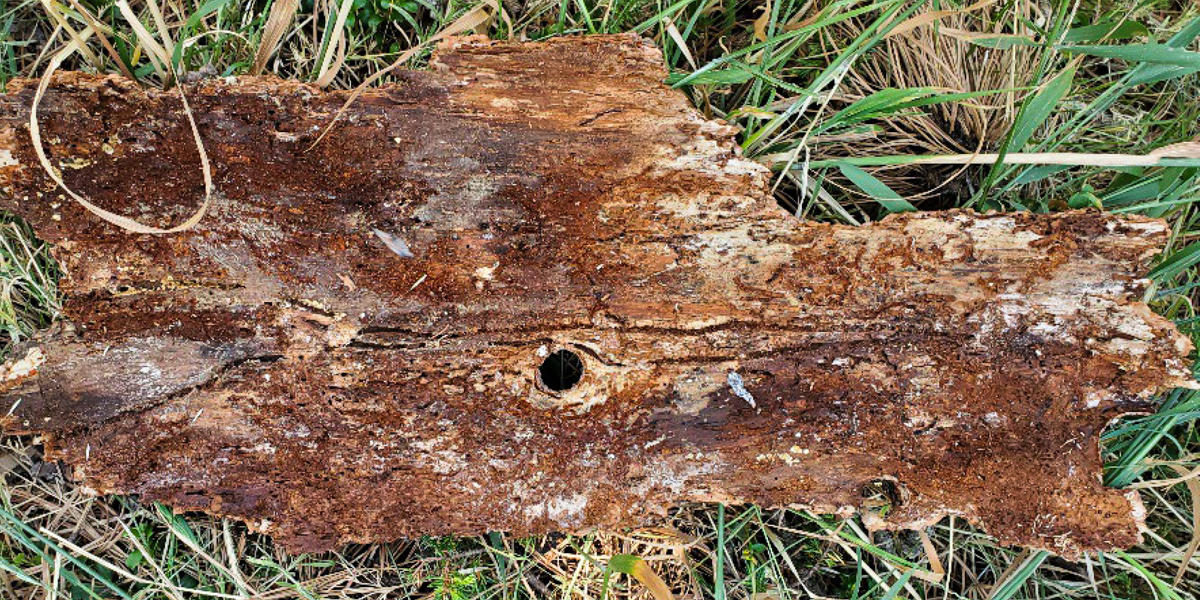
Bark from a Ponderosa pine struck by lightning with likely mountain pine beetle galleries. Credit: Brian Aukema
Background
Mountain pine beetle is a bark beetle the size of a grain of rice that can kill large pine trees. It is native to western North America, but recent events and a changing world have allowed it to expand its range eastward. There is concern that the insect could arrive in Minnesota or other Lake States, where it could devastate mature pine forests without resistance to the insect. In a previous study, researchers did not find mountain pine beetles in Minnesota.
Mountain pine beetles prefer to attack and kill large trees because the interior tissues make excellent food for their developing offspring. Beetles kill large, living pines over large areas when they are at outbreak levels. Pioneering female beetles alight on a tree, chew through the bark, and emit chemical signals that attract large numbers of male and female beetles that also start chewing through the bark. If the tree cannot fend off these attacks, it is rapidly colonized and dies.
While researchers have learned a great deal about how mountain pine beetles kill trees at outbreak levels, little is known about how mountain pine beetles exist when there are few others around. In fact, populations can go as long as 60 years or more between outbreaks. This project seeks to quantify the endemic niche—the space in which mountain pine beetles exist when they are not at tree-killing levels.
Research questions
- How and where do endemic mountain pine beetles survive with competing species of bark beetles at a whole tree level?
- What are the differences in abundance of longhorned borers between Minnesota and South Dakota?
- What are past environmental conditions at the landscape level that have permitted the transition from endemic to epidemic populations?
Practical implications
Understanding the endemic niche will allow land managers to improve early detection surveillance strategies to protect Minnesota’s conifer forests from death by mountain pine beetle. We will be able to further quantify the risk of successful establishment should the insect arrive in the state, and be able to identify the conditions in which outbreaks are likely to occur.
Outcomes
This project began in April 2024 and is in progress for the next several years. Please check back at a later time for updates.
To stay connected, sign up for the MITPPC newsletter and follow us on Facebook and LinkedIn.